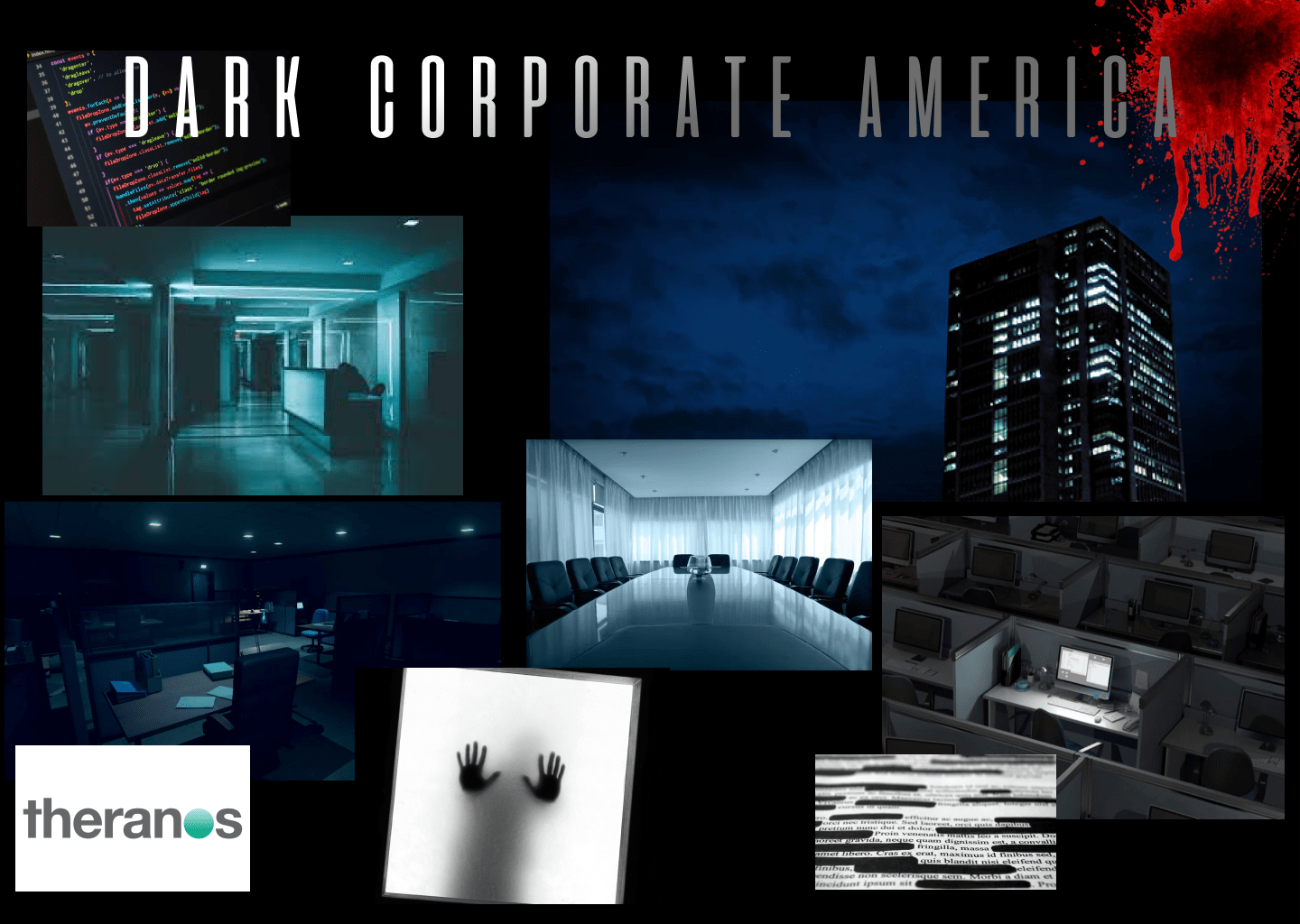For our game in space, my group was interested in designing an escape room where the player is dropped into the aftermath of a large event. Originally we were interested in a murder mystery type-theme, where some sort of murder had occurred and it was up to the players to discover who committed the murder to solve the escape room. From there, we realized having players keep track of different characters and motivations might rely too heavily on the story to be successful. We realized we wanted to keep the theme of some dark, triggering event to set off the escape room with a mystery to solve but tell most of the story through the space. From there we all came up with themes that played into the conference room space in which our escape room would be located. We wanted our escape room to be tense and ominous and evoke emotions of fear and confusion.
From this jumping off point I began thinking of escape rooms that could be set in an office-like environment. Below is my moldboard which played on the eerie feeling of being in a big office building after dark. My moodboard depicts the dark side of Corporate America where the corrupt underbelly comes out at night. 
My Spotify Playlist:
From here, I thought of three ideas that made use of the space:
- Office Party Gone Wrong This idea played on the ominous feeling of corporate office building at night. The idea is that some interns at a company decided to throw a party after dark in the office, the players would either be other interns that were invited to the party and showed up late or other workers that show up first to the office to find the scene left from the party. When the players come into the escape room all of the party-goers are dead or missing and it is up to players to discover what happened. This idea stuck out to me because there seemed to be a lot of potential in utilizing a disheveled scene of a party aftermath, perhaps with streamers, scattered solo cups, party music still playing, etc. and use those to hide the puzzle and clues. One idea we had talked about as a group was having some sort of liquid that players manipulated in a puzzle, either having to drink it or pour it together to create some outcome. The leftover “alcohol” from a party seemed to lend to this well.
- Alien Abduction This idea falls in a similar vein of working in an office at night, this time the office is NASA. This was inspired by scenes from Don’t Look Up and Arrival where teams are shown working late into the night on space-related work. The backstory is that a NASA team was trying to make contact with a specific species of aliens and was getting very close to contact, one night as they stayed late in a conference room, they all disappeared. The escape room players come into the scene left after the alien abduction and have to figure out what happened. This idea had potential for interesting sound-related clues where we could decode special ‘language” that the aliens used to communicate as well as marks from the abduction like smaller versions of crop circles.
- Stealing Secret Documents Similarly staying in the office setting but changing the motivation from discovering the truth to stealing an important document this escape room is set in the CEO’s office of the rival company. The escape room players are spies/robbers hired by a company to steal their most precious secret document (perhaps a secret recipe a la’ the Krabby Patty Secret Formula) so that the company can crush their competition and dominate the industry. The CEO’s office would be set up with different levels of traps to catch any burglars and protect the recipe that could take the form of the puzzles in the room.
All of these ideas incorporate a lot of different types of fun. The primary types of fun would be Fantasy, Narrative from the story and Challenge from the Puzzles. Depending on the types of puzzles we devise, some puzzles could also incorporate sensation, discovery, and fellowship. Specifically for fellowship we discussed as a team the idea of having puzzles that require collaboration to solve, perhaps physical puzzles that require more than 2 hands at once.


